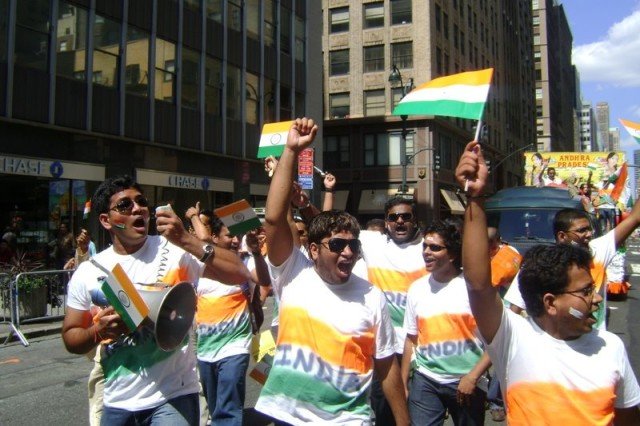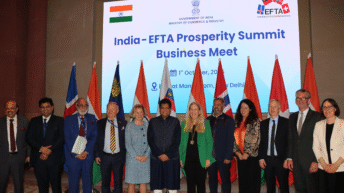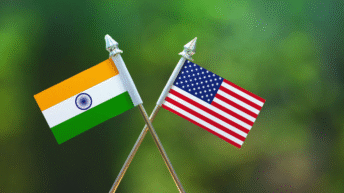
Go east or west… you may go to any part of planet earth– you are sure to find a Sikh (Singh), Sharma, Verma, Ghosh, Patel or Iyer trying to make a home or nest.
Indians are familiar sight everywhere from Seattle, San Francisco or Vancouver in the USA to Victoria in south-eastern Australia, Moscow, Kazakhstan, Kenya, Kuwait, Singapore, Somalia, and Shanghai!!
According to the Ministry of External Affairs, there are about 32 million Non-Resident Indians (NRIs) and Overseas Citizens of India (OCIs) — the world’s largest overseas diaspora — residing outside India. This apart, some 25 lakh Indians migrate overseas every year — the highest annual number of migrants in the world.
Nepal has the highest number of NRIs (4 million) in the entire world constituting almost 14.7% of the total population of the country. The USA ranks second with 3.1 million NRIs comprising nearly 1% of its population.
Indians living in Saudi form 9.8% of Saudi Arabia’s overall population as well as the highest expatriate population in the country. There are 2.4 million NRIs residing in Malaysia, and 2.2 million Indians in the United Arab Emirates (UAE) – living in Abu Dhabi, Sharjah and Dubai.
Likewise, the United Kingdom has the highest population of 1.4 million NRIs in Europe. South Africa has a population of 1.3 million Indians – most of them residing in Durban which is called the largest Indian city outside India.
Indians comprise 3% of the Canadian population while Myanmar with 1.1 million Indians – also ranks in the list of top ten countries with the highest NRI population. Not to be left behind Indians form 68% of the population of Mauritius.
Significantly Indians are the youngest average age (34 years) and the fastest-growing community in Australia. No wonder Hindi and Punjabi are among the top 10 languages spoken in Australia.
That’s not all, Indians are among the most frequent foreign travellers in the world. A large number of Indians travel all over the world –for different reasons ranging from business, study, sightseeing, shopping, or honeymoon. Every year, more than 50 million Indians go abroad – that is three Indians go abroad for every two foreign tourists coming to India.
According to the UN World Tourism Organisation, India is rapidly climbing the world rankings for outbound tourism. According to industry estimates, the number of outbound tourists has been increasing at a rate of 25% – higher than for any other country in the world in the last few years.
According to the Centre for Asia Pacific Aviation –an aviation think-tank report, the number of Indians holidaying abroad is likely to treble by 2025 and may account for 40 percent of the international air trips from the country. If this trend continues, by 2025 there will be 13.9 million international leisure departures from India, accounting for 40.3 percent of the 34.5 million international departures, the report estimates.
The report indicates that Dubai, Thailand, France, Singapore, and Malaysia are among the five most preferred holiday spots accounting for over 50 percent of Indian leisure travel overseas followed by Sri Lanka, Hong Kong, Indonesia (primarily Bali), USA, and Switzerland. Europe is slowly gaining popularity, while China, Cambodia, Australia, Macau, Pakistan Bhutan, and Nepal too remain popular. Mauritius and Maldives fascinate the honeymooners. These preferences keep changing.
Business travel accounts for 40%, while 20% of people travel abroad to visit friends and relatives. In countries like the UK, where large numbers of Indians are settled, and Australia, where large numbers of Indians are studying– there are many visitors from home. On the contrary, Thailand and Switzerland are primarily leisure destinations.
Interestingly, there is nothing like pure business or leisure. Most visiting friends and relatives (VFR) and business trips have leisure and shopping components.
An average Indian traveller stays for 12-15 days abroad though it may vary according to the destination. A trip to Southeast Asia is a maximum of five days. The average visit to Australia lasts 5-6 weeks. Business trips could last up to three weeks while holiday trips could last around two weeks. The length of stay in the UK has risen from 20 to 27 days in the recent past. The average trip to the UK may be about 39 days, 20 days for business, and ten days for holidays.
First-time outbound travellers prefer to take package tours. Otherwise, most Indians prefer independently organized trips. According to an ACNielsen survey, leisure trips to Australia and Africa, are predominantly package tours. The share of package tours is much lower in Asia (41%), Europe (33%) and America (32%).
May-July and October-December are the peak months for travel to Europe. In recent years, the UK has been observing an erratic pattern, with a peak in April-June coinciding with the long summer holidays. Similarly, Switzerland has been witnessing a peak inflow of Indians in May-June, followed by a slump between Dec- Feb.
During their stay abroad, Indians engage in a wide range of activities. Shopping in Europe is confined to souvenirs and gifts for family and friends back home. The UK is popular among the Indians for historical and cultural reasons as well as for being the home of cricket. Many Indians stay with their friends and relatives in the UK.
Traditionally Mumbai, Delhi, Chennai, Kolkata and Bangalore accounted for most globe trotters but of late even smaller cities like Nagpur, Visakhapatnam, Ahmedabad, Nasik, Jaipur, Amritsar, and Ludhiana are catching up fast. Not just one trip abroad; many families take two-three vacations a year.
One of the main reasons behind this is the 350 million strong Indian middle class- bigger than the entire US population! A number of rich and affluent Indians have a net worth of more than US$ 1 million. Today, 180 million Indians — three times the population size of the UK speaks English. Many of them own cars, credit cards, and cell phones. For those with disposable income, a foreign trip is a great ego booster and opportunity to show off.
Another reason behind this trend is that Indians are among the most lavish spenders in the world. An average Indian spends around US $ 1,200 per visit. The spending power of Indians is four times more than that of Chinese and Japanese travellers.
Shopping is the main preoccupation for Indians. Indians love shopping in foreign countries. Half the Indian travellers go abroad only for shopping. Almost 73% buy branded duty-free goods. According to the Reserve Bank of India (RBI), Indians spend over $5.52 billion while traveling abroad. The fact that quite a few credit cards issued by Indian banks these days are valid internationally allows this to happen.
Significantly more than seven million Indian nationals departed on outbound travels from India in spite of traveling restrictions around the world due to the coronavirus pandemic in 2020. In the fiscal year of 2020, the highest passenger traffic over 9.4 million passengers flew to the United Arab Emirates – one of the most preferred leisure and business destination for many Indians while Singapore ranked second with passenger traffic of 2.3 million.
Today, many Indian students are studying in other countries. According to the Bureau of Immigration (BoI), various countries are granting visas to Indian students for studying in universities of their countries. As a result, nearly 1,33,135 Indian students departed India for higher education in the current year, as compared to 4,44,553 students in 2021 and 2,59,655 in 2020. The US, Canada, and the UK were among the most preferred countries for education in 2021 Minister of State for External Affairs V. Muraleedharan told Rajya Sabha in a written reply.
Indian students going abroad to study is not a new phenomenon. The lack of quality educational institutes in India and the demand-supply gap have been forcing many families to send their children abroad. The number of Indian nationals applying for US visas has doubled.
A number of airlines are operating international flights from India to encash this opportunity. Many international tourism promotion boards have established offices in India. The entry of a few low-cost airlines has intensified the price war. As a result, the international fares have become 10 to 15 percent lower than many domestic routes. Consequently, Indians are finding it cheaper to travel abroad than within India. Hotels too are offering big discounts. Travel loans are also available in easy installments – making it all the easier for Indians to splurge more freely abroad.
In recent times, a number of Bollywood films have been shot in picturesque foreign locations. Apart from these, “Uniquely Singapore”, “Malaysia– Truly Asia” and “Fly-Buy-Dubai” – are three very imaginative campaigns, that have captured the imagination of the Indian tourists.
Many countries like Britain, Australia, New Zealand, Canada, Singapore and Malaysia are offering incentives to Indian film and TV producers to shoot on their locations. This way they can at least be sure to make the footage of their exotic tourism destinations available to millions of viewers in that country – without paying the hefty advertisement charges.






Add comment